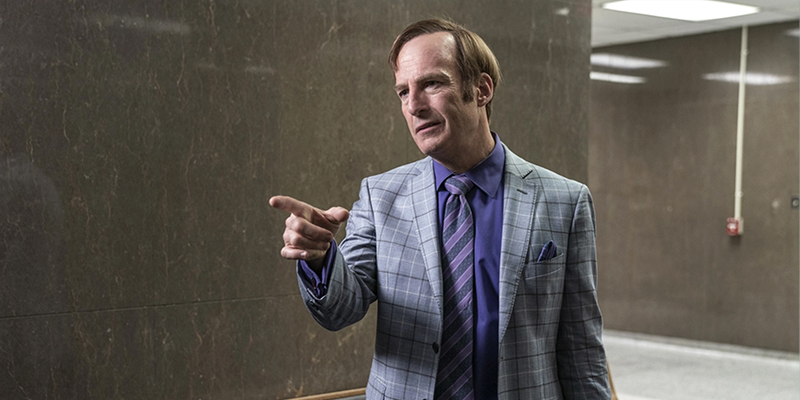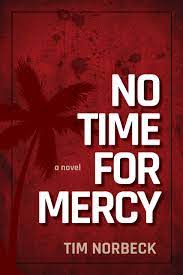A few weeks ago, I directed the television clicker to a Dateline NBC program. Of course, it was about crime! My spouse wasn’t in the mood for a crime show and complained that there was entirely too much crime genre coverage on TV in general. I responded that there was, in fact, a good reason for its frequency. Television has adopted the old newspaper adage—if it bleeds, it leads—as a programing directive. The plain and simple reality is that Americans have a penchant for crime shows and have for a long time. Dateline NBC began in 1992, while Cold Case Files goes back to 1999.
My personal favorite, Forensic Files, debuted in 1996. It is still going strong! The Menendez brothers’ trial in 1993, the O.J. Simpson case in 1995 and the JonBenet Ramsey murder were riveting and further whet the American appetite for crime shows and/or documentaries. My interest in this genre fueled the writing of my second novel, a fast-paced thriller, No Time for Mercy, about a father avenging the death of his beloved daughter.
Forensic Files was originally conceived as a show focusing specifically on medical investigations but soon morphed into a general crime series. Viewers found interesting the use of forensics in solving each crime, whether it happened to be a single strand of hair or a plant indigenous to a certain area found at a crime scene. And they packaged it all in 30 minutes. And, of course, when James Watson discovered the structure of DNA in 1953, it gave rise to the modern use of DNA in crime cases. One of the most common sources of DNA at a crime scene is a bodily fluid, whether it be blood, saliva, sweat, urine, or semen. Cold Case Files became immensely popular due to this new convincing and effective tool of discovery.
DNA fingerprinting was first used in a police forensics test in 1986. Two teenagers had been raped and murdered in Leicestershire, England, in 1983 and 1986 respectively. Use of DNA proved that the suspect originally charged was found innocent and eventually led to the actual murderer’s conviction. In 1987, Florida rapist Tommie Lee Andrews became the first person in the U.S. to be convicted as a result of DNA evidence. CSI (Crime Scene Investigation) was an American procedural forensic crime drama that ran for 15 seasons (2000-2015).
With American interest already high because of these successful crime shows, it could be expected that viewers would also be intrigued with serial killers and their heinous crimes. Ted Bundy and other monsters like John Wayne Gacy, Dennis Rider (B-T-K), Jeffrey Dahmer and Gary Ridgway (the Green River Killer) were responsible for murder sprees around the U.S. for almost four decades. All were subject to TV documentaries. In my book, No Time for Mercy, I do talk about serial killers in general and their weapons of choice. Since 1900, almost 3,000 American serial killers have been identified. Collectively they have ended the lives of almost 10,000 people.
Experts claim that about one third of the killers acted for the enjoyment of it, meaning that they executed their victims for the mere thrill or sense of power they felt over them. Greediness was second, with almost 30 percent doing it for some kind of financial reward. The rest of them did it for a variety of reasons including anger or revenge, etc. To no one’s surprise, I’m sure, is that a firearm was the preferred murder weapon for 42 percent of serial killers. Knives or other cutting instruments accounted for more than 20 percent while six percent of them favored poison and two percent actually used axes. The FBI defines serial killers as those who have killed two or more people in separate events.
So why is it that Americans and others who find crime and violence repulsive, seem to be so interested in watching information on heinous murders unfold on TV dramas or documentaries? Some experts contend that true crime is appealing to us because viewers get a glimpse into the mind of a real person who has committed a heinous act. According to columnist Grace Blair, writing for Psychology Today, there are four reasons that we all like to watch crime shows—or even binge on them. Apparently, such drama gives us a hearty adrenaline rush in the comfort of our own living room. It also engages our mind and imagination. Furthermore, the shows act like an overall puzzle, as DNA or something else leads us to its final piece. A third reason, she explains, is that we enjoy our “close calls” with danger as we experience the grisly stories. The fourth is that she suggests that we are all fascinated by our own “dark side.” Not to say that most people actually have such criminal thoughts, but it is somewhat exciting to engage with our “deviant” capacities afforded us by watching what some human beings are capable of doing.
Other experts point to the fact that true crime has interesting characters, albeit dangerous and sinister, a sense of urgency, tension and usually some sense of justice at the end. That sense of justice, of course, is never enough because the victim or victims died, but there is usually an end point when the crime is solved. Some people have reported that watching crime shows help them feel safer and more prepared should they ever encounter a threatening situation. There is no one answer, obviously, why Americans find television crime shows or books on crime so alluring, but their interest in both only seem to be growing. My spouse no longer asks me why I am watching or reading something on crime!
Crime shows remain popular today. These shows are often cited in the top 10 in the genre:
“The Boys,” featuring a group of avengers who take down corrupt superheroes who abuse their powers. This TV adaptation of the popular comic series by the same name is set in a universe in which superpowered individuals are heroes owned by the powerful corporation Vought International, which markets and monetizes them.
“Better Call Saul,” about criminal lawyer Jimmy McGill—before he established his strip-mall law office in Albuquerque, New Mexico, and changed his name to Saul Goodman. Jimmy McGill is a down-on-his luck con artist who finds himself in one pickle after the next. This series is a spin-off of “Breaking Bad,” in which Saul was first introduced as the respectable lawyer Jimmy becomes, serving drug lords and other criminals.
“The Lincoln Lawyer,” based on Michael Connelly’s bestselling novels, this series follows idealist Micky Haller, a LA County defense attorney who rose up through the ranks defending petty criminals and finds himself in trouble when a wealthy Beverly Hills playboy accused of aggravated assault and battery enlists Haller’s services. Mickey runs his law practice out of the back of his 1986 Lincoln Town Car.
“Ozark,” a financial advisor moves from Chicago to the Missouri Ozarks, where he must launder money to appease his Mexican drug boss. The series centers around Marty Bryde and his family as they navigate the murky waters of life in a dangerous drug cartel. In these nail-biting episodes, the Brydes make it rich but also struggle for survival, both physically and as a family.
“Barry,” follows Barry Berkman, a US Marine and Afghanistan veteran from Cleveland who becomes a hitman. Lonely and unfulfilled, he heads to LA to kill a target and finds a new sense of purpose when he joins a class full of aspiring actors.
“Bosch: Legacy,” featuring Harry Bosch, an irreverent LA homicide detective who bucks against authority, following his gut and bending a few rules while achieving the best solved-case rate in California. Bosch shows his soft side with his daughter.
“Breaking Bad,” is set in Albuquerque, New Mexico, and tells the story of Walter White, an underpaid and under-respected high school chemistry teacher who learns to produce and distribute crystal meth after he’s diagnosed with stage-three lung cancer and wants to accumulate instant wealth for his family.
“Peaky Blinders,” a gangster family epic set in 1900s England, focused on a gang that sews razor blades in the peaks of their caps. Thomas Shelby and his brothers return to Birmingham after serving in the British Army during WWI. He and his gang control the city, and as his ambitions grow outside Birmingham, Thomas will stop anyone who gets in his way.
“The Blacklist,” follows rookie FBI profiler Elizabeth Keen and her “partner,” Raymond “Red” Reddington, a former US Navy officer turned high-profile criminal who voluntarily surrenders to the FBI after eluding capture for decades. He tells the FBI that he has a list of the most dangerous criminals in the world and is willing to inform on their operations in exchange for immunity from prosecution. He insists on working with Keen.
“NCIS,” agents in the Naval Criminal Investigative Service’s Washington, DC Major Case Response Team are led by Special Agent Leroy Jethro Gibbs, a former Marine gunnery sergeant who follows his instincts and is a man of few words. He leads a troupe of colorful personalities in a show that combines military drama, police procedure and even humor. Spinoffs include NCIS: Los Angeles, NCIS: New Orleans and NCIS: Hawaii.
***


















